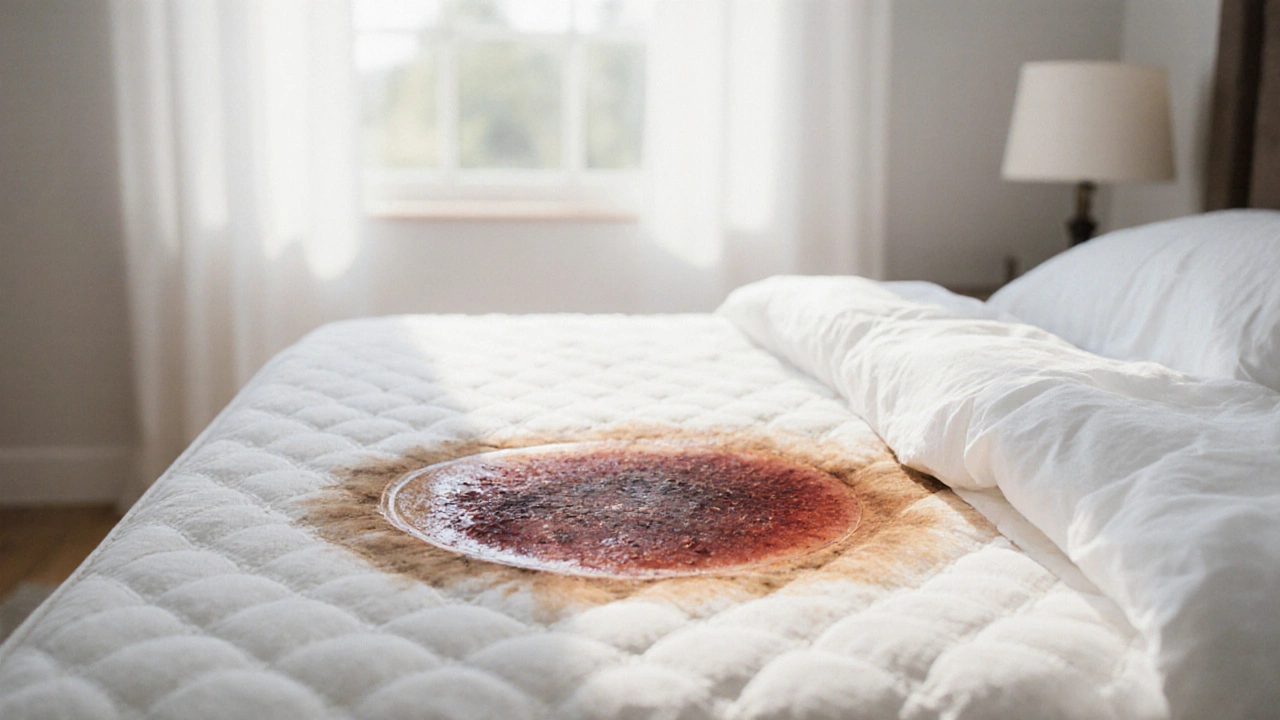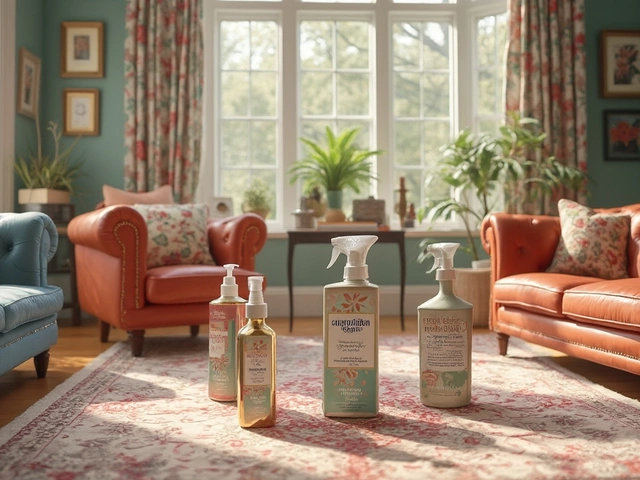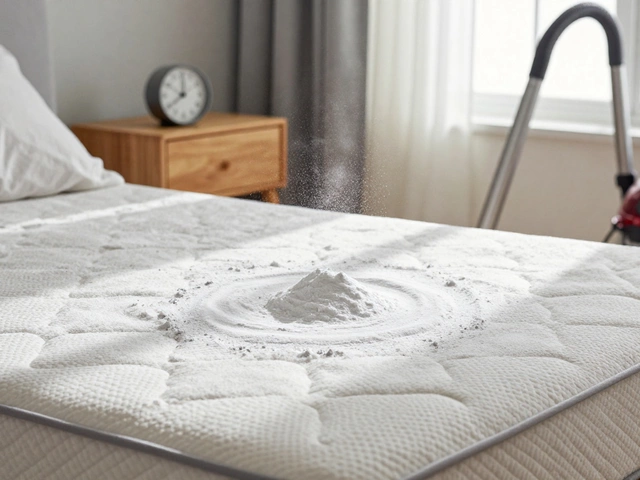Mattress Stain Remover Calculator
Stain Identification Guide
Select the type of stain you're dealing with to get personalized cleaning recommendations.
Recommended Cleaning Solution
Select a stain type to see your personalized cleaning solution.
Pro Tips
When a deep stain sinks into your mattress, it can feel like a nightmare - especially if the mark looks permanent. Mattress stain removal is actually doable with the right approach, a few household items, and a bit of patience. Below is a step‑by‑step guide that works for blood, urine, wine, oil and other tough marks.
1. Identify the Stain Type
Different stains need different chemicals. Figuring out what you’re dealing with helps you pick the safest, most effective solution.
- Blood or protein‑based stains: Enzyme‑based cleaners break down the proteins.
- Urine or alkaline stains: White vinegar neutralises the pH.
- Wine or tannin stains: Hydrogen peroxide oxidises the pigments.
- Oil or grease: Baking soda absorbs the oil before you scrub.
2. Gather Safe Cleaning Tools
Having the right tools on hand prevents you from improvising with harsh chemicals that could damage the mattress fabric or foam.
- Baking soda - degreaser and deodoriser.
- White vinegar - natural acid for pH balance.
- Hydrogen peroxide (3%) - mild bleach for colour‑fast stains.
- Enzyme cleaner - commercial or DIY (e.g., pet‑stain enzymatic spray).
- Clean white cloths or microfiber towels - avoid coloured fabrics that could bleed.
- Soft‑bristle brush or old toothbrush - for gentle agitation.
- Wet‑vacuum or handheld extractor - to pull out excess moisture.
- Protective gloves - keep skin safe from irritation.
3. DIY Cleaning Solutions
All the recipes below use items you probably already have at home. Choose the one that matches your stain type.
3.1 Baking Soda & Vinegar Paste
- 1cup baking soda
- ¼cup white vinegar
- 2tbsp warm water
Mix until you get a thick paste. Works best on oil and urine stains.
3.2 Hydrogen Peroxide Spray
- ½cup 3% hydrogen peroxide
- 2tbsp dish soap (clear)
- 2tbsp baking soda
Shake well in a spray bottle. Ideal for wine, coffee and blood.
3.3 Enzyme Cleaner Solution
- 1part commercial enzyme cleaner
- 3parts warm water
Pre‑mix in a spray bottle. Perfect for urine, sweat and food‑based stains.
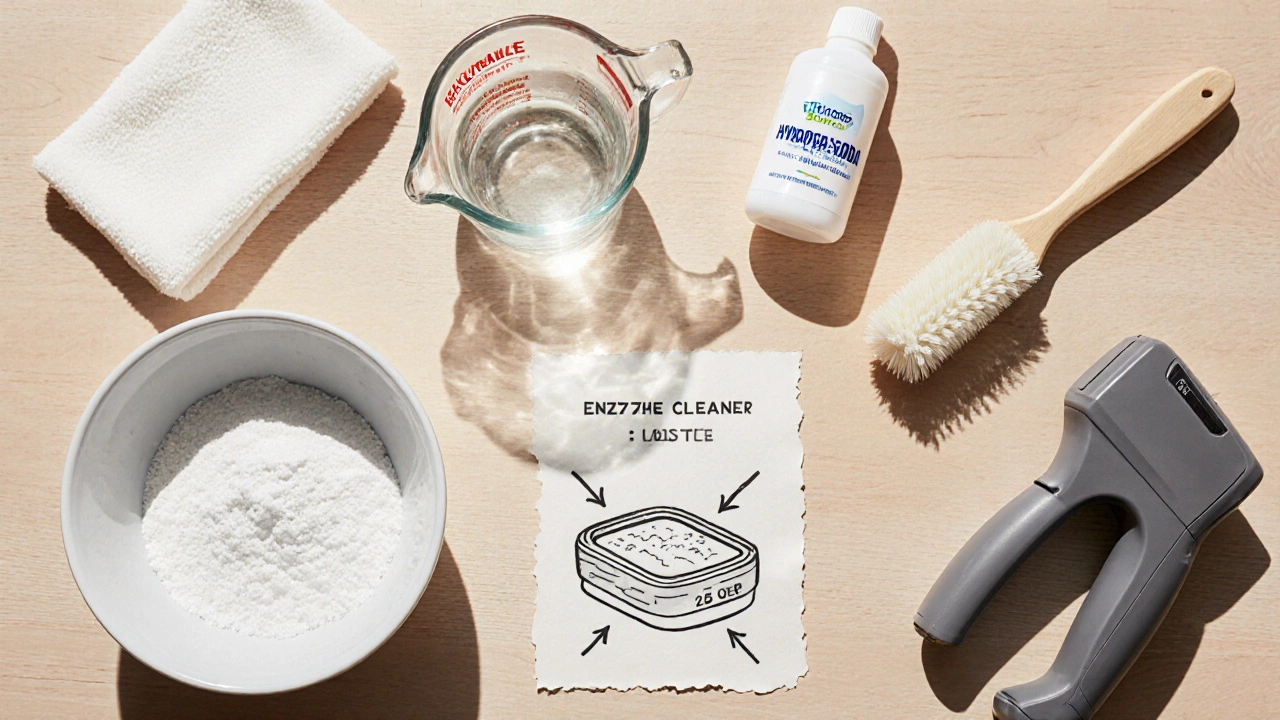
4. Step‑by‑Step Removal Process
- Ventilate the room. Open windows and let fresh air circulate for at least 15minutes.
- Blot the fresh stain. Use a clean cloth to press out as much liquid as possible - never rub, as that pushes the stain deeper.
- Apply the chosen solution. Lightly mist the area (or dab the paste) until it’s just damp.
- Let it sit. Allow 5‑10minutes for enzyme cleaners, 3‑5minutes for vinegar paste, and 2‑3minutes for peroxide spray. This gives the formula time to break down the particles.
- Gently agitate. Use the soft‑bristle brush in circular motions. Avoid over‑scrubbing; you don’t want to tear the mattress fibres.
- Extract excess moisture. Place a clean towel over the treated spot, press, then vacuum with a wet‑vac. If you don’t have a wet‑vac, use a clean, dry towel to blot repeatedly.
- Rinse (optional). For peroxide or enzyme solutions, lightly mist a cloth with plain water and blot the area to remove residue.
- Dry thoroughly. Let the mattress air‑dry for at least 4hours. Use a fan or dehumidifier to speed up the process. The mattress should be completely dry before you make the bed again.
5. Using a Wet‑Vacuum or Steam Cleaner
If the stain is especially stubborn, a wet‑vac can pull out deep‑seated grime that manual blotting misses. Follow these tips:
- Set the vacuum to the lowest suction setting to avoid pulling foam apart.
- Use warm (not hot) water mixed with a mild detergent.
- Run the vacuum over the stained area for 30‑45seconds, then let the mattress dry fully.
Steam cleaners can also sanitise without chemicals, but keep the steam nozzle at least 6inches above the surface to prevent oversaturation.
6. Prevent Future Stains
The best cure is prevention. A mattress protector creates a barrier that can be wiped clean instead of treating the mattress itself.
- Choose a waterproof, breathable protector. Look for a 100% cotton or bamboo cover with a polyurethane membrane.
- Wash the protector monthly. This keeps allergens and odors at bay.
- Rotate the mattress every 3‑6months. Even wear reduces pressure points and slows stain absorption.
- Address spills immediately. The sooner you blot, the less likely the stain will set.
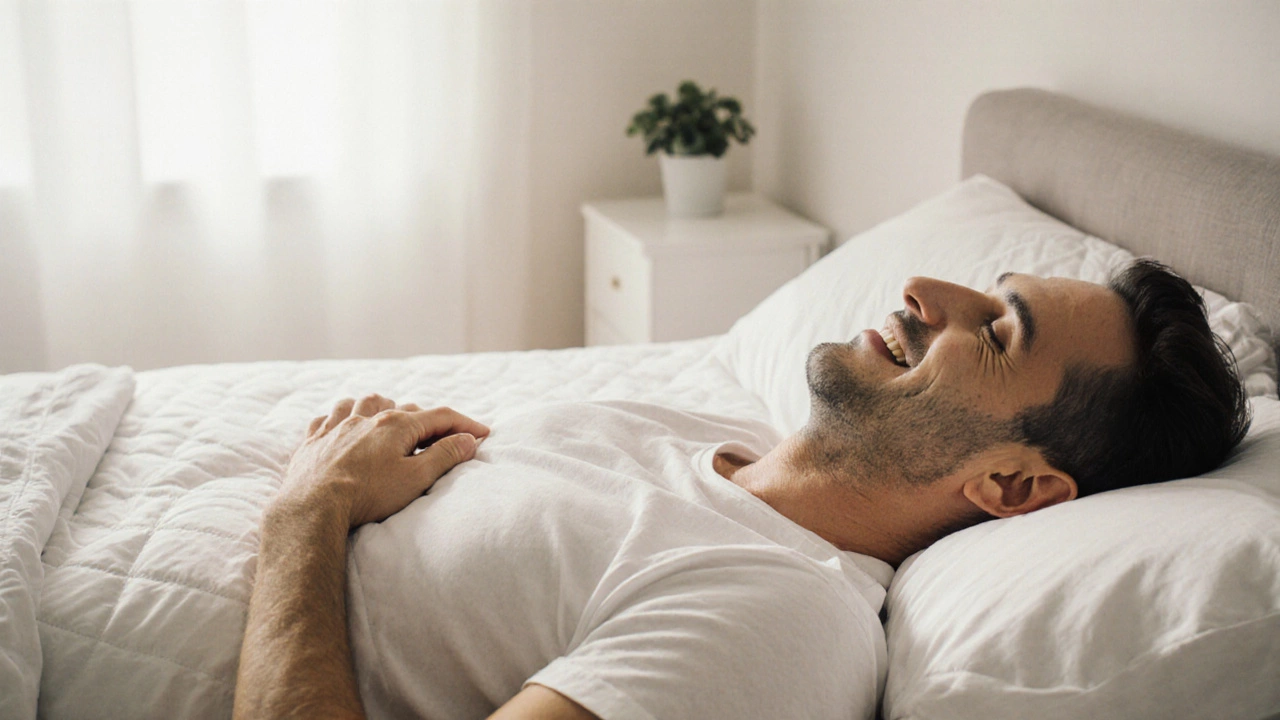
7. Common Pitfalls and Pro Tips
Even with a solid plan, a few mistakes can ruin your effort.
- Avoid harsh chemicals. Bleach, ammonia or strong acids can break down the foam and cause lingering odours.
- Don’t oversaturate. Too much liquid turns the mattress into a sponge, leading to mould.
- Test any solution first. Apply a small amount to an inconspicuous corner; wait 5minutes to ensure there’s no colour change.
- Use white cloths only. Colored fabrics may bleed and create a new stain.
- Consider professional cleaning. If the mattress is older than 7years or has a persistent odour, a specialist server can deep‑clean the coils and foam.
Comparison of DIY Cleaning Solutions
| Solution | Best For | Cost (USD) | Drying Time | Safety |
|---|---|---|---|---|
| Baking soda & vinegar paste | Oil, urine | $0.10 per use | 3‑4hrs | Highly safe, non‑toxic |
| Hydrogen peroxide spray | Wine, blood, coffee | $0.25 per use | 4‑5hrs | Gentle bleach - avoid on coloured fabrics |
| Enzyme cleaner | Urine, sweat, pet stains | $0.40 per use | 2‑3hrs | Biodegradable, low irritation |
Frequently Asked Questions
Can I use regular laundry detergent on a mattress?
A thin solution of mild laundry detergent can be used for light spills, but it’s best to stick with the DIY mixes above. Detergent can leave a residue that attracts dust and may affect the mattress’s breathability.
Will hydrogen peroxide damage memory foam?
At the 3% concentration recommended here, hydrogen peroxide is safe for most foam types when used sparingly and fully rinsed. Over‑application or using higher concentrations can weaken the foam’s structure.
How long should I wait before putting sheets back on?
The mattress must be completely dry. In a well‑ventilated room with a fan, 4‑6hours is typical. In colder or humid climates, give it up to 12hours to avoid mould.
Is a mattress protector enough to stop stains?
A high‑quality, waterproof protector blocks most liquids, but it can’t stop a spill that seeps around the edges. Using a protector plus quick blotting offers the best defence.
Can I use a steam cleaner on a latex mattress?
Steam is safe for latex as long as you keep the nozzle a few inches away and avoid saturating the surface. Excess moisture can cause the latex to become sticky.
